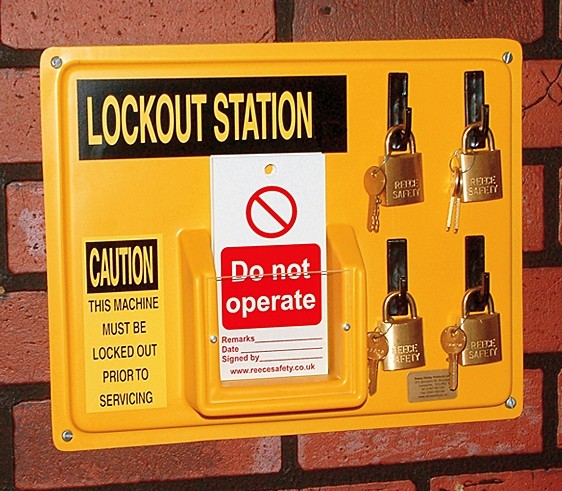One of the most important practices to complete when using any equipment involving hazardous energy is Lockout Tagout Tryout. This procedure, which is made up of nine steps, has long been considered the safest way to isolate equipment prior to maintenance work or repairs taking place. Each step is integral for protecting workers and outside contractors from accidental re-energisation of equipment, which could potentially result in injury or fatality. Here, we will discuss the equipment workers and businesses need in order to perform an effective lockout tagout procedure.

Lockout hasps and padlocks
Lockout hasps and safety padlocks are needed to complete a successful lockout programme for a single or multi-person lockout. They allow an energy source, such as those involving electrical, pneumatic, thermal and potential energy etc.., to be isolated and shut down safely by more than one worker.
Hasps should be clearly marked, using lockout tags, with a date and name so that it can be easily identified to the worker responsible. They are available in several different sizes, with different warning messages, to suit different lockout needs to effectively complete a lockout of any size required. Customised tags are also easily created with logos and specific messages.
Lockout tagout tryout (LOTOTO) equipment from Reece Safety include padlocks and hasps which can be colour coded to eliminate the risk of crossovers across workers, projects, or work sites to ensure easier management and individual responsibility, particularly if there are employees working different shifts. In a multi-person lockout, it is vital to use a lockout hasp to ensure safe and secure lockouts from each worker, this will eliminate the risk of a padlock being locked onto another padlock which can be very dangerous.
Lockout stations
Lockout stations are an essential piece of equipment as part of lockout tagout procedures, so that in the event of an unexpected start-up, equipment can be quickly and safely accessed. Locate lockout stations near the relevant machinery as part of the workplace health and safety programme; this allows lockout equipment to be easily accessed and to be accounted for.
PPE
As part of The Provision and Use of Work Equipment Regulation 1998, work equipment should not result in health and safety risks, and lockouts should be used to prevent unexpected start-up of machinery or equipment. PPE, or personal protective equipment, is a vital part of preventing accidents and injury during an electrical isolation procedure.
Each person should wear appropriate PPE whilst conducting lockout programmes, reflecting the hazards that are present in the working environment of the time. Protective suits, gloves, and boots are just some examples of the types of PPE which should be available to wear when working with machinery and completing a lockout.
First aid kits
An obvious one, first aid kits are needed in all workplaces, with specific first aid needed for the effects of injuries that could be caused by equipment or an incorrect lockout, such as burns or shocks. Ensure that management keep first aid readily available for employees needing immediate aid to injury and that a qualified first aider is always on hand.
Ensure that your working environment and employees have all the necessary safety equipment required before allowing them to work on machinery.

